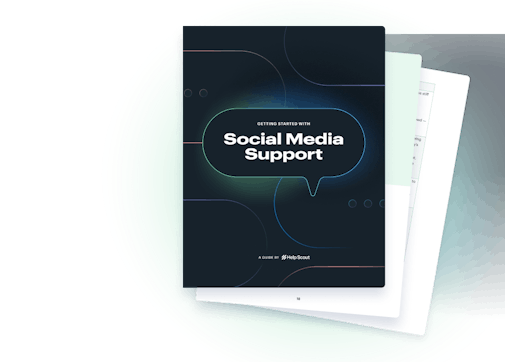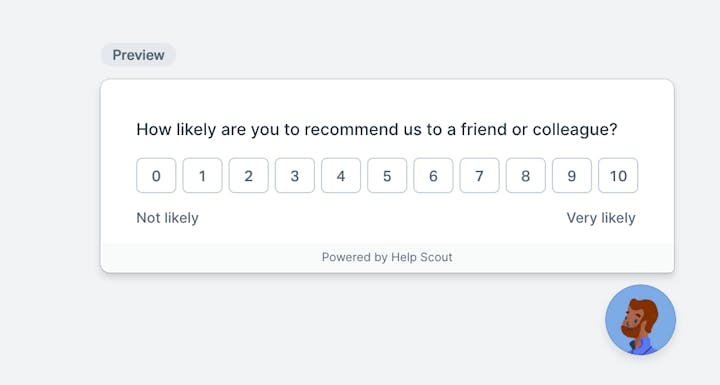10 Techniques for Collecting Voice of the Customer Data


Success in today’s business world comes down to understanding your customers. Companies that cultivate a strong understanding of who their customers are, what they love, and what they struggle with find themselves miles ahead of their competitors.
That’s where Voice of the Customer research comes into play.
What is Voice of the Customer?
Voice of the Customer (VoC) is a research method businesses use to better understand their customers. It helps you get to know your customers’ behavior, struggles, preferences, and needs on a deeper level, enabling you to better serve and communicate with them.
Conducted through a variety of methods, VoC data informs nearly every aspect of the modern business:
Support teams use VoC to anticipate and proactively solve customer problems.
Sales teams learn how to effectively speak to customer pain-points and objections through VoC.
Product teams build roadmaps for product development by tapping into VoC research to identify customer needs, perceived product value, and gaps between the two.
The growing emphasis on Voice of the Customer research parallels the transition to customer-centric businesses — it’s a vital tool in helping businesses increase revenue, retain more customers, and reduce costs for operations like support.
In fact, Aberdeen Group found that companies implementing best-in-class VoC practices saw nearly 10x the annual year-over-year revenue growth of those with less capable VoC programs. That’s due, in part, to 55% higher customer retention.
10 ways to conduct Voice of the Customer research
There are a lot of ways companies can approach conducting Voice of the Customer research. You can choose from a variety of individual methods — which we’ll detail below — and you may often choose to draw on multiple research techniques to ensure a holistic picture of your customers.
1. Interview customers
Customer interviews are one technique you can use to gather VoC data. While interviews are inherently time-intensive, they often glean some of the most valuable feedback.
By going directly to the customer and conducting an in-depth interview, you open the door to really personalized, in-depth research. You can conduct ad hoc customer interviews, survey a representative sample of customers, or hone in on a particular customer segment to interview.
Whether in person, over the phone, or through video chat, interviewers have the opportunity to dig into the customer’s responses and pull out additional insights that other VoC research techniques may miss.
For example, if a customer indicates they struggled with a particular aspect of your product, the interviewer can dig in there and gather more specific details about what the problem was, why it happened, and how your company might fix it.
Plus, customers often view this type of engagement as the most personalized, meaning it can be an opportunity to nurture individual customer relationships, too.
2. Survey customers
Customer surveys are one of the most flexible methods for gathering Voice of the Customer data:
Surveys can include three questions posed immediately after signup.
They can be in-depth, 100-point questionnaires sent to your most engaged customers via email.
Or they can be everything and anything in between.
Surveys are also an eminently scalable option for VoC research. Once the questionnaire is built, you can use it to survey as many customers as you can get to fill it out.
To that end, they can serve as a useful filter for identifying which customers you want to get more details and feedback from, via another, more in-depth VoC technique (like interviews or focus groups).
Plus, surveys are one of the best techniques for gathering both quantitative and qualitative feedback — you can easily include quantitative ratings along with open-ended qualitative questions.
Increase your response rates by adding surveys to your user experience
Research has shown that incorporating feedback loops into the user workflow can lead to better response rates than standard email surveys. Luckily, several tools on the market can help you take this type of approach.
For instance, with Help Scout’s microsurveys feature, you can:
Keep it short. Capture customer sentiment in a matter of seconds with one of six microsurvey types, including NPS®, multiple choice, or a simple thumbs up or down.
Meet customers where they are. Place a Beacon — Help Scout’s engagement widget — anywhere on your website or within your app to incorporate feedback opportunities directly into your user experience.
Be in the moment. Collect richer insights by surfacing a microsurvey at key moments in the customer journey vs. following up with an email after the moment has passed.
Whether you go with Help Scout or another solution, make sure you find survey software that enables you to capture quality Voice of the Customer data that lends to actionable results.
3. Pay attention to social media
As a way to communicate with customers, social media can be invaluable to the VoC process. Connecting over social media often allows for a more informal, two-way, and real-time conversation versus email or phone calls.
Social media also opens up the opportunity for social listening. While customers may regularly engage with your brand on social media — and those interactions are a valuable source of VoC data in their own right — the more potent source comes from social listening.
By monitoring how customers talk about your brand and your product when they aren’t speaking directly to you, you can get a more honest, unfiltered view of their feedback. Similar to surveys, social listening can help you identify customers you wish to conduct more involved VoC research with.
And social listening isn’t limited to the popular social media platforms. You can also find valuable feedback on online forums and communities and websites like Reddit and Quora.
The Complete Guide to Getting Started with Social Media Support
Discover the benefits of supporting customers on social and get the tools you need to set a social media support strategy in motion.
Get the guide
4. Listen to recorded customer calls
Whether they’re sales calls, demos, customer support calls, or something else entirely, any calls your team has with customers are a gold mine for Voice of the Customer data. Wherever customers invest in your brand by actually spending time on the phone, you’re likely to find really helpful feedback.
Customers who get on the phone with you are usually one of three things:
Very interested in your product.
Very happy with your company.
Very unhappy with your company.
In all three of those situations, you’re looking at (usually) detailed, one-on-one conversations with engaged, passionate customers.
Reviewing these conversations offers both macro and micro information. You can identify broader trends across customer complaints, objections, and successes — then, in the same process, you can get more granular feedback and details from each call.
Plus, since you likely record customer calls anyway, you can gather VoC research based on data you already have.
5. Monitor customer reviews
Monitoring your brand’s reputation on the web is vital to winning new customers — and it’s also a good option for Voice of the Customer research.
Depending on the venue, online customer reviews can include everything from a basic 5-star rating to ratings breakouts for individual aspects of your product and company to lengthy open-ended reviews. These are a rich vein of customer feedback.
Reviews are one of the most effective ways to tap into both positive and negative feedback. Plus, reviews on third-party websites are the most direct way to find unsolicited customer opinions — meaning you can find out how customers really talk about your brand out in the wild.
Third-party review sites vary from industry to industry, but here are a few options to get you started:
For general reviews: TrustPilot, Facebook, and Consumer Reports.
For software companies: G2, Capterra, and TrustRadius.
For travel, food, and hospitality businesses: Yelp, Google My Business, and TripAdvisor.
For home services businesses: Angi and HomeAdvisor.
6. Measure your Net Promoter Score
Net Promoter Score is a common metric for gauging customer loyalty that simply consists of asking customers how likely they are to recommend your business or product to someone.
While you won’t get a ton of contextual VoC data directly from an NPS survey, you can:
Get a broader understanding of engagement within your customer base.
Identify customers likely to be open to more involved feedback requests.
Find detractors who may have some vital negative feedback to share.
If you aren’t familiar with Net Promoter Score (NPS) as a company, you’ve likely seen it as a consumer. It looks something like this:

Customers who respond with a number under 6 are known as “detractors,” those who respond with 7 or 8 are called “passives,” and customers who choose 9 or 10 are your “promoters.”
7. Conduct focus groups
Focus groups, similar to customer interviews, are often done in person. The primary difference is that focus groups involve a small group of customers, instead of being conducted one-on-one.
The group of customers is gathered together along with a moderator. From there, the moderator presides over a (often free-flowing) discussion about the brand, product, or industry.
As a source of Voice of the Customer data, focus groups are one of the best ways to conduct more exploratory research — in their discussions, groups may often touch on things your company may never have thought to ask about.
Plus, the back and forth between customers can help to draw out consensus and deeper details that other research techniques may gloss over.
Focus groups can also be useful when the feedback required is more specific: seeing how customers perceive a particular new product, for example, or gauging their reactions to a rebrand or advertisement.
8. Offer a feedback form
Regardless of whether you’re actively seeking Voice of the Customer feedback or not, it’s a good idea to have a form available where customers can share their feedback at any given time. This is separate from your Customer Support operation, and it can be an invaluable way to keep a pulse on how customers feel about your brand and product.
Often hosted right on your website, a feedback form allows customers to share their thoughts whenever they arise. That’s useful because it provides unsolicited feedback — meaning each customer who submits a form was inspired to do it, whether by positive or negative experience.
Feedback forms can also help you catch emerging trends on the Voice of the Customer, even when you aren’t actively looking for them.
9. Talk to customer-facing employees
With all the emphasis on going out and soliciting customer feedback, it’s easy to forget that you have employees within your team who are already well-versed in the Voice of the Customer. Team members who talk with customers regularly are often your best window into the customer mind.
That includes, most notably, your Support team, who spend the majority of their time with customers. When problems arise (like a software glitch or a product deficiency), your Support team will often be the first to know and the first to identify widespread problems from isolated issues.
Other teams, like Sales, are also on the front lines of listening to customers’ needs and trying to match them up with what you offer. They can offer invaluable details on customer pain points, objections, and why deals may be lost to competitors.
Try the customer support platform your team and customers will love
Teams using Help Scout are set up in minutes, twice as productive, and save up to 80% in annual support costs. Start a free trial to see what it can do for you.
Try for free
10. Map customer behavior and UX
Distinct from most of the previous methods we’ve covered here, this technique is more about understanding the customer experience from an analytical perspective.
Here, you want to understand how customers behave versus what they say or perceive. After all, what customers say they want and how they behave don’t always match up.
By using tools designed for website analytics (e.g., Google Analytics), product analytics (like Amplitude and Mixpanel), and user experience mapping (like Crazy Egg), you can get a sense of how customers move throughout your website and, where applicable, your product.
You can also measure how changes to your website or product affect customer behavior. For example, if you see that customers fall out of the ideal customer journey at the same touchpoint, you can identify points of friction and test to find the best solution.
Listen to the Voice of the Customer
Today’s most successful businesses have one thing in common: they’re customer-driven. Business leaders focus on creating products that solve customer problems, streamlining the customer journey, and improving the overall customer experience.
The best way to do those things effectively is to tap in to the voice of your customers. If you’re willing to listen, they’ll tell you just about everything you need to know.
The Supportive Weekly: A newsletter for people who want to deliver exceptional customer service.